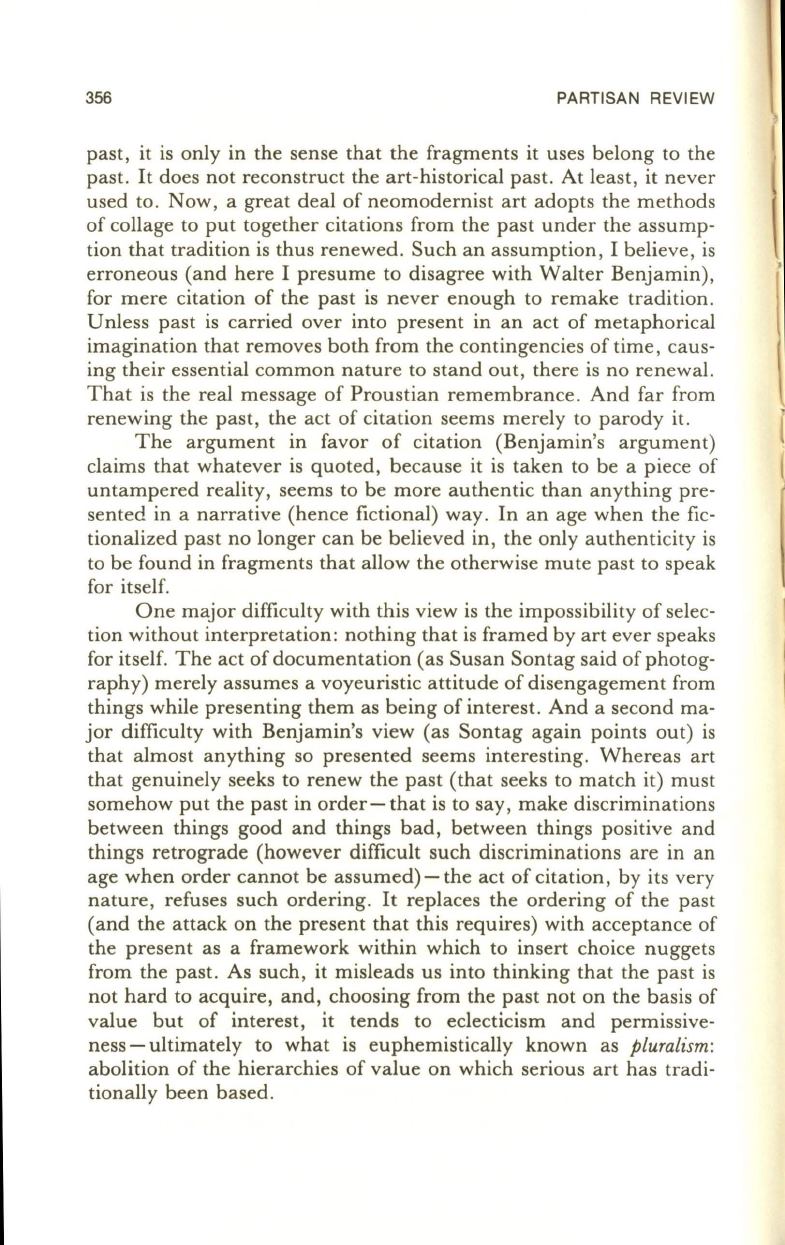
356
PARTISAN REVIEW
past, it is only in the sense that the fragments it uses belong to the
past.
It
does not reconstruct the art-historical past. At least, it never
used to. Now, a great deal of neomodernist art adopts the methods
of collage to put together citations from the past under the assump–
tion that tradition is thus renewed. Such an assumption, I believe , is
erroneous (and here I presume to disagree with Walter Benjamin),
for mere citation of the past is never enough to remake tradition .
Unless past is carried over into present in an act of metaphorical
imagination that removes both from the contingencies of time, caus–
ing their essential common nature to stand out, there is no renewal.
That is the real message of Proustian remembrance. And far from
renewing the past, the act of citation seems merely to parody it.
The argument in favor of citation (Benjamin's argument)
claims that whatever is quoted, because it is taken to be a piece of
untampered reality, seems to be more authentic than anything pre–
sented in a narrative (hence fictional) way. In an age when the fic–
tionalized past no longer can be believed in, the only authenticity is
to be found in fragments that allow the otherwise mute past to speak
for itself.
One major difficulty with this view is the impossibility of selec–
tion without interpretation: nothing that is framed by art ever speaks
for itself. The act of documentation (as Susan Sontag said of photog–
raphy) merely assumes a voyeuristic attitude of disengagement from
things while presenting them as being of interest. And a second ma–
jor difficulty with Benjamin's view (as Sontag again points out) is
that almost anything so presented seems interesting. Whereas art
that genuinely seeks to renew the past (that seeks to match it) must
somehow put the past in order - that is to say, make discriminations
between things good and things bad, between things positive and
things retrograde (however difficult such discriminations are in an
age when order cannot be assumed)-the act of citation, by its very
nature, refuses such ordering.
It
replaces the ordering of the past
(and the attack on the present that this requires) with acceptance of
the present as a framework within which to insert choice nuggets
from the past. As such, it misleads us into thinking that the past is
not hard to acquire, and, choosing from the past not on the basis of
value but of interest, it tends to eclecticism and permissive–
ness - ultimately to what is euphemistically known as
pluralism:
abolition of the hierarchies of value on which serious art has tradi–
tionally been based.
J


